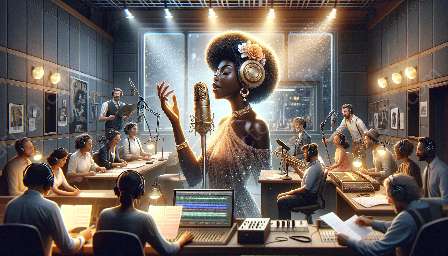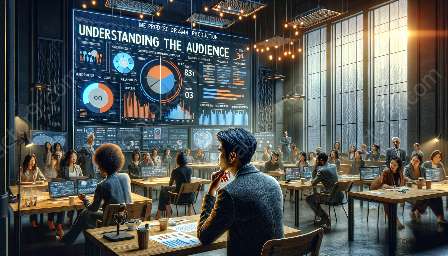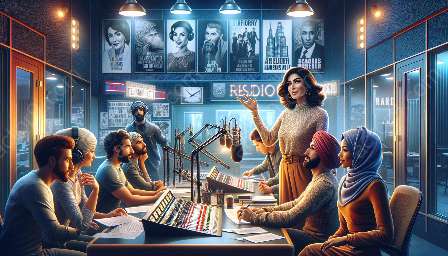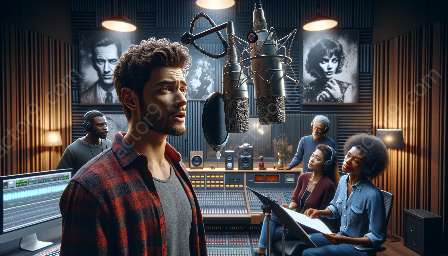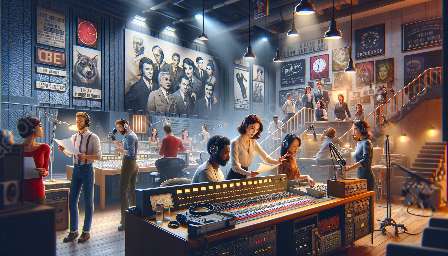Radio drama production has traditionally captivated audiences through evocative storytelling and compelling sound effects. However, with the advent of interactive audio storytelling technology, the possibilities for enriching the listener experience have expanded exponentially.
Advancements in Technology Used in Radio Drama Production
Before delving into the benefits of interactive audio storytelling technology, it's crucial to understand the technological landscape of radio drama production. Over the years, various technological advancements have shaped the way radio dramas are created and consumed. From the emergence of digital audio editing software to the utilization of high-quality microphones and recording equipment, the tools available to radio producers have vastly improved the production quality and immersive nature of radio dramas. Additionally, the integration of online platforms and streaming services has extended the reach of radio dramas to global audiences, allowing for greater accessibility.
Defining Interactive Audio Storytelling Technology
Interactive audio storytelling technology represents a groundbreaking evolution in the field of audio content creation. By leveraging interactive elements, such as branching narratives, immersive sound design, and user-driven experiences, this technology enables listeners to engage with the storyline in a more dynamic and participatory manner. Through the use of interactive audio platforms, listeners can influence the direction of the narrative, make decisions for characters, and explore alternate story paths, thus fostering a deeper sense of immersion and agency.
Enhancing the Listener Experience
One of the primary benefits of integrating interactive audio storytelling technology into radio drama production is the enhancement of the listener experience. By introducing interactive elements, radio producers can create a more personalized and engaging journey for the audience. Listeners become active participants in the story, rather than passive recipients, leading to heightened emotional investment and a sense of co-creation with the content.
Furthermore, interactive audio storytelling technology opens up avenues for innovative storytelling techniques, such as spatial audio, binaural soundscapes, and 3D audio effects. These immersive audio experiences transport listeners into the heart of the narrative, allowing for a truly visceral and captivating encounter with the radio drama.
Expanding Creative Opportunities for Producers
For radio drama producers, interactive audio storytelling technology presents an array of creative opportunities. The dynamic nature of interactive storytelling enables producers to craft non-linear narratives, implement adaptive sound design, and experiment with multi-branching story arcs. This creative freedom fosters a spirit of experimentation and exploration, empowering producers to push the boundaries of traditional storytelling conventions.
Building Community Engagement and Social Connection
Interactive audio storytelling technology also facilitates community engagement and social connection. Through interactive features, radio dramas can cultivate a sense of community among listeners, fostering discussions, debates, and shared experiences. Moreover, the integration of social components, such as real-time audience polls, live chat interactions, and collaborative decision-making, can transform radio dramas into communal events, uniting listeners in a shared narrative journey.
Integration with Emerging Technologies
As interactive audio storytelling technology continues to evolve, it intersects with various emerging technologies to further enrich the radio drama production process. The integration of artificial intelligence (AI) and machine learning algorithms can enable personalized story recommendations and adaptive content delivery based on listener preferences and behavior. Additionally, virtual reality (VR) and augmented reality (AR) platforms offer new dimensions for immersive storytelling, providing listeners with visually enriched environments and interactive elements that complement the audio narrative.
Conclusion
The convergence of interactive audio storytelling technology with radio drama production signifies a transformative era in audio entertainment. Through the synergistic blend of advanced technologies, creative ingenuity, and listener engagement, radio producers can harness the power of interactive storytelling to captivate audiences in groundbreaking ways. As the medium continues to evolve, the potential for interactive audio storytelling to elevate the art of radio drama production remains a compelling and promising frontier.

